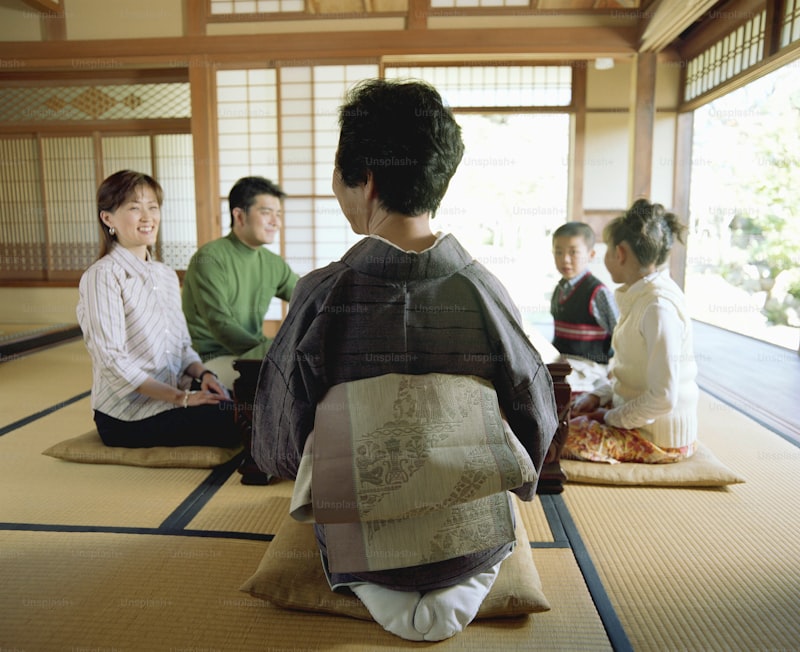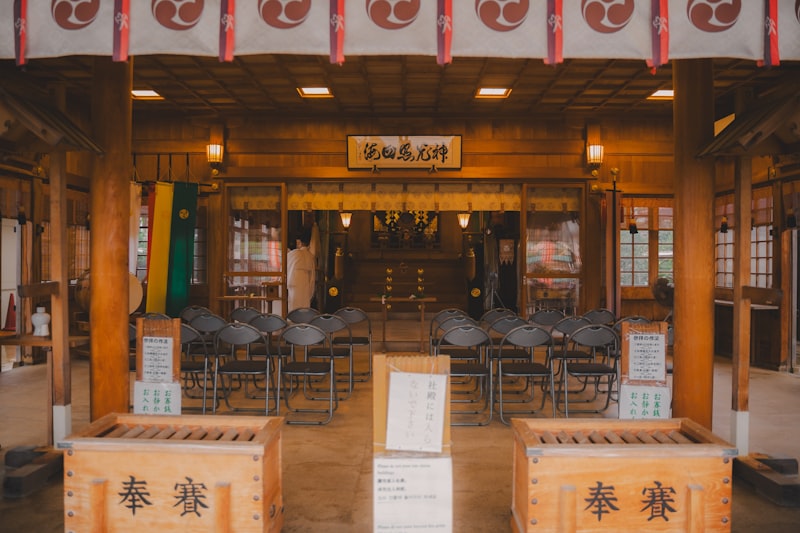Kyoto, Japan, is a city steeped in history and tradition, offering a plethora of cultural experiences that captivate travelers from around the globe. From serene temples to traditional tea ceremonies, Kyoto embodies the essence of Japanese culture.

One of the most iconic cultural experiences in Kyoto is visiting its ancient temples and shrines. Places like Kinkaku-ji, with its stunning Golden Pavilion, or Fushimi Inari Taisha, famous for its thousands of vibrant torii gates, transport visitors to another time. The architecture and serene atmosphere of these sites offer a glimpse into Japan’s rich spiritual heritage.
For those interested in traditional arts, Kyoto is a treasure trove. The city is renowned for its tea ceremony, known as chanoyu, where every gesture and movement holds deep cultural significance. Participating in a tea ceremony allows visitors to not only taste matcha tea but also to appreciate the mindfulness and beauty ingrained in Japanese rituals.
Kyoto’s festivals are another highlight of its cultural tapestry. The Gion Matsuri, held annually in July, is one of Japan’s most famous festivals, featuring elaborate processions of floats and traditional performances. The festival’s roots date back over a thousand years, showcasing Kyoto’s enduring traditions and community spirit.
Exploring Kyoto’s traditional neighborhoods, such as Gion and Higashiyama, is like stepping into a bygone era. Narrow lanes lined with wooden machiya townhouses, old-fashioned shops selling handicrafts, and maiko (apprentice geisha) hurrying to their appointments create an ambiance that feels both nostalgic and enchanting.
Kyoto’s cultural experiences are a testament to Japan’s rich heritage and meticulous preservation of traditions. Whether visiting ancient temples, participating in a tea ceremony, or strolling through historic neighborhoods, every corner of Kyoto offers an opportunity to delve deeper into Japanese culture.
Unveiling Kyoto’s Hidden Gems: Cultural Experiences Beyond Temples
Imagine strolling through narrow cobblestone streets lined with traditional machiya houses, each exuding its own story of centuries past. These preserved neighborhoods not only showcase Kyoto’s architectural charm but also invite visitors to step into a bygone era, where tea houses whisper tales of samurai and geisha.
For those seeking a deeper connection to Kyoto’s cultural fabric, immersing in a tea ceremony is a must. Here, amidst the tranquil setting of a tatami room, one learns the art of preparing matcha, a ritual that embodies harmony, respect, and tranquility—a true embodiment of Japanese aesthetics.
Venturing further, Kyoto’s artisan workshops offer a glimpse into age-old crafts still practiced with dedication. From delicate silk kimono weaving to intricate pottery techniques passed down through generations, these workshops celebrate the essence of craftsmanship and dedication to tradition.
No exploration of Kyoto’s hidden gems is complete without a visit to its lesser-known shrines. Tucked away in verdant hillsides or secluded corners of the city, these shrines offer not only spiritual solace but also panoramic views that paint the changing seasons in hues of cherry blossoms or autumn foliage.
In Kyoto, every stone pathway and moss-covered garden tells a story, beckoning travelers to unravel its secrets. Whether wandering through vibrant markets, where the aroma of freshly grilled skewers fills the air, or meditating in serene bamboo groves, Kyoto reveals itself as a city where every experience is a brushstroke on a canvas of cultural richness.
So, delve beyond Kyoto’s famed temples, and let its hidden gems ignite your curiosity and wonder. Explore, indulge, and uncover the soul of a city where tradition and modernity intertwine seamlessly, offering a journey that transcends time and captivates the heart.
Kyoto’s Tea Ceremonies: Delving into Tradition and Tranquility
Imagine entering a serene tea room adorned with tatami mats and delicate scrolls, where every movement is deliberate and every gesture carries meaning. The Tea Ceremony is not merely about drinking tea; it’s a choreographed ritual that celebrates harmony, respect, purity, and tranquility. Each element, from the graceful hand movements of the host to the serene ambiance of the surroundings, aims to create a moment of profound peace and connection with the present moment.
At the heart of the ceremony is matcha, a finely ground green tea revered for its vibrant color and rich umami flavor. The preparation of matcha is an art form in itself, requiring meticulous attention to detail and years of practice to master. The host, often trained for years under a master, prepares the tea with precise movements, symbolizing respect and mindfulness towards the guests.
Participating in a Tea Ceremony in Kyoto is like stepping back in time while experiencing the essence of Japanese philosophy and aesthetics. It’s a journey into the past where traditions are upheld with utmost reverence, yet it also serves as a reminder of the timeless values that continue to shape Japanese culture today.
In a world where everything moves at a breakneck pace, the Tea Ceremony offers a sanctuary of calm and mindfulness. It teaches us to appreciate the beauty in simplicity, the elegance in tradition, and the importance of being fully present in each moment. Whether you’re a visitor to Kyoto or a resident deeply rooted in its culture, the Tea Ceremony is an invitation to pause, reflect, and savor the subtle flavors of life.
Geisha Traditions Alive: An Insider’s Guide to Kyoto’s Gion District
Geisha, or “geiko” as they are known in Kyoto, are skilled entertainers trained meticulously in various Japanese arts such as classical music, dance, and conversation. They epitomize grace and elegance, serving as cultural ambassadors preserving centuries-old customs in a rapidly evolving world.
Walking through Gion’s narrow cobblestone streets feels like stepping back in time. The district is lined with beautifully preserved machiya houses, some of which serve as exclusive teahouses where geisha entertain select guests. These teahouses, known as ochaya, are venues where geisha perform traditional dances, play musical instruments like the shamisen, and engage guests in sophisticated conversation.
Encountering a geisha gracefully gliding through Gion’s alleyways is a rare and mesmerizing experience. Their elaborate kimono, intricate hairstyles adorned with kanzashi hairpins, and distinct white makeup embody an aesthetic that has fascinated people for centuries.
Beyond their artistic skills, geisha are revered for their conversational prowess. In the intimate setting of an ochaya, guests can engage in discussions ranging from classical poetry to current affairs, all while enjoying the refined hospitality that defines the geisha experience.

Gion’s geisha traditions are deeply intertwined with the district’s seasonal festivals and rituals, such as the Miyako Odori in spring and Gion Matsuri in summer. These events showcase the geisha’s talents to a broader audience, reinforcing their cultural significance and ensuring that their legacy endures.
Exploring Kyoto’s Culinary Culture: From Kaiseki to Street Food Delights
Kaiseki: At the pinnacle of Kyoto’s culinary scene lies Kaiseki, a multi-course meal that embodies the essence of Japanese haute cuisine. Rooted in the principles of seasonality, balance, and meticulous preparation, Kaiseki meals are a symphony of flavors and textures. Each dish, crafted with precision, showcases the freshest seasonal ingredients, transforming dining into a sensory experience.
Tea Culture Influence: Kyoto’s history as Japan’s former capital and epicenter of tea culture deeply influences its cuisine. Kaiseki itself evolved from the elaborate tea ceremonies of Kyoto, where simplicity and beauty harmonize in every aspect of the meal, from presentation to taste.
Street Food: Amidst Kyoto’s ancient temples and serene gardens, bustling street markets offer a contrasting but equally delightful culinary experience. Here, visitors can indulge in Takoyaki (octopus balls), Yakitori (grilled skewered chicken), and Okonomiyaki (savory pancakes), served fresh and hot from street vendors. These flavorsome bites not only satisfy hunger but also provide a glimpse into Kyoto’s vibrant street life.

Local Ingredients: Central to Kyoto’s culinary prowess are its locally sourced ingredients. From the prized Wagyu beef of the nearby Kobe region to the exquisite Kyoto vegetables cultivated in the city’s surrounding gardens, every dish celebrates the bounty of the region.
Cultural Heritage: Kyoto’s culinary culture isn’t just about food; it’s a reflection of its rich cultural heritage. Whether dining in a centuries-old Ryotei (traditional Japanese restaurant) or savoring matcha-flavored sweets in a quaint tea house, every culinary experience in Kyoto is imbued with tradition and reverence.
Conclusion: In Kyoto, culinary exploration goes beyond mere sustenance; it’s a journey through centuries of tradition and craftsmanship. Whether enjoying a meticulous Kaiseki meal or sampling street food delights, every bite tells a story of Kyoto’s cultural richness and culinary excellence.
Frequently Asked Questions
How can I explore Kyoto’s historical temples and gardens?
Discover Kyoto’s historical temples and gardens with our concise guide. Learn how to navigate these cultural treasures, including must-visit sites and practical tips for an enriching experience.
How can I participate in a traditional tea ceremony in Kyoto?
Learn how to participate in a traditional tea ceremony in Kyoto with our concise guide. Discover the essential steps and etiquette to experience this cultural ritual firsthand.
Where are the best places to experience geisha culture in Kyoto?
Discover the top spots in Kyoto to immerse yourself in geisha culture. Explore Gion, the historic district famous for its teahouses and traditional entertainment. Don’t miss Pontocho, known for its narrow alleys and exclusive dining. Experience authentic geisha performances and traditional Japanese hospitality in these iconic neighborhoods.
What are some unique festivals and events to attend in Kyoto?
Discover unique festivals and events in Kyoto, Japan, where tradition meets celebration. From the vibrant Gion Matsuri showcasing magnificent floats to the tranquil Arashiyama Hanatouro illuminating bamboo forests with lanterns, Kyoto offers cultural experiences that captivate every visitor.
What are the must-try cultural activities in Kyoto?
Discover Kyoto’s must-try cultural activities including tea ceremonies, traditional kaiseki dining, exploring historic temples like Kinkaku-ji and Fushimi Inari Shrine, and attending seasonal festivals such as Hanatoro or Gion Matsuri.


